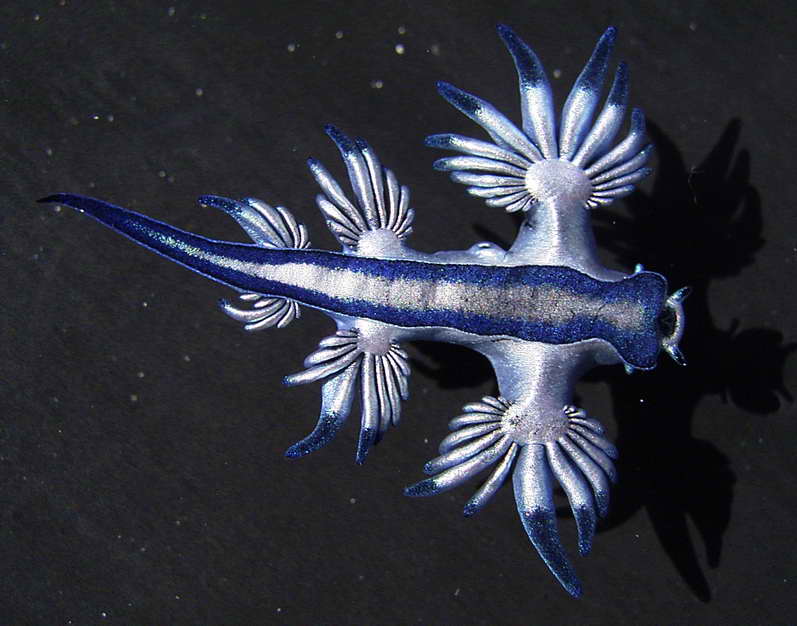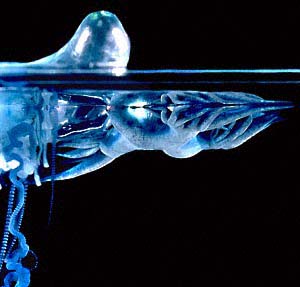
Glaucus atlanticus
Forster, 1777
Order:NUDIBRANCHIA
Suborder:AEOLIDINA
Family:Glaucidae
Distribution and habitat
This nudibranch is pelagic, and is distributed throughout the world's oceans, in temperate and tropical waters. Regions where this slug is found include the East and South Coast of South Africa, European waters, the east coast of Australia and Mozambique.[5] This species floats upside down on the surface tension of the ocean.

Glaucus is, like most sea slugs, a hermaphrodite, containing both male and female reproductive organs. Unlike most nudibranchs, which mate with their right sides facing, sea swallows mate with ventral sides facing.[7] After mating, both animals produce egg strings.


Dorsal surface, which faces downward as animal floats upside down on the surface of the ocean (Pleuston). This is the smaller of two similar pleustonic species which are blown ashore during periods of strong onshore winds.


Feeding on the "By-the-wind sailor" (Velella velella). Also feeds on the Portuguese man-o'-war, commonly
known as the Bluebottle (Physalia physalis) and, below, on Porpita porpita.
------
Mating sequence shown below




man o war, a very poisonous jellyfish

